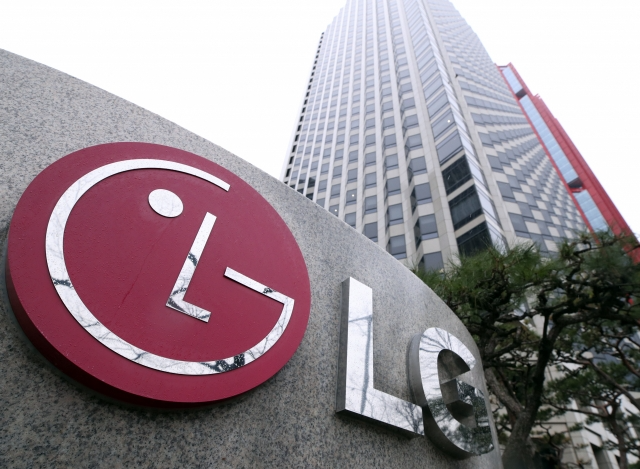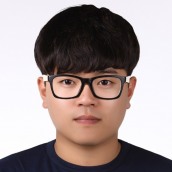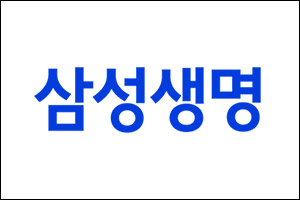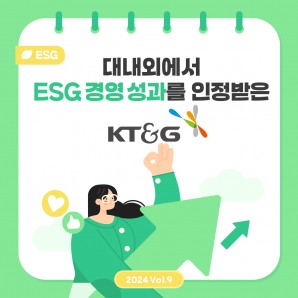
On April 7, LG Electronics announced its provisional earnings, reporting KRW 22.7447 trillion in consolidated revenue and KRW 1.259 trillion in operating profit for Q1 2025. Revenue rose by 7.8% year-over-year, marking the company’s highest-ever first-quarter revenue. However, operating profit declined by 5.7% over the same period.
This is the first time LG Electronics has recorded over KRW 22 trillion in Q1 revenue. A company official explained, “Despite continued uncertainties in the business environment such as the economic downturn, the company achieved record-high revenue thanks to stable growth in core businesses and qualitative growth in B2B, subscription, and webOS-led Non-HW (non-appliance) direct-to-consumer (D2C) sectors.”
The official added, “Revenue from high-margin, qualitative growth sectors increased, enabling operating leverage and a stable profit structure,” citing gains from efficient resource allocation, stabilized raw material and logistics costs, and flexible global production operations.
The main driver of revenue growth was, unsurprisingly, LG’s flagship home appliance division. The Home Appliance & Air Solution segment maintained a strong foothold in the premium B2C market. B2B businesses like built-in appliances and component sales (such as motors and compressors, the core of appliances) also contributed significantly to performance.
Subscription services that combine products and services are rapidly expanding. LG plans to accelerate growth by strengthening its subscription-optimized product lineup and care services while also expanding its presence in overseas subscription markets.
The media and entertainment business is also poised for synergy. Starting this year, LG has integrated its display-based operations—including TVs, IT (laptops and monitors), and ID (commercial displays)—to strengthen its webOS-based advertising/content business, previously centered on TVs.
LG recently launched its 2025 TV lineup, which features significantly enhanced AI capabilities across content recommendation, picture, and sound quality, aiming to boost its market competitiveness.
“New releases such as the ultra-lightweight AI-powered LG Gram Pro laptop and the lifestyle screen LG StanbyME 2 are also receiving positive feedback,” an LG official noted. “The commercial display segment continues to secure major overseas contracts.”
However, analysts in the securities industry point out LG Electronics’ continued reliance on its home appliance business this year. In particular, they assess that the second quarter will serve as a true litmus test, as the surge in appliance demand was likely a temporary effect ahead of the implementation of tariff policies by the Trump administration in the United States.
Park Sang-hyun, a researcher at Korea Investment & Securities, stated in a report, “The main factor behind LG’s Q1 results appears to be ‘pull-in demand’ from consumers looking to purchase before price hikes due to U.S. tariffs. Meanwhile, the VS (Vehicle component Solutions) and BS (Business Solutions) divisions likely underperformed due to slower EV demand and delayed visibility of new business results.”
He continued, “Q2 earnings will serve as a test of LG’s ability to respond to tariffs. Given LG’s profit structure, raising product prices due to expanded tariffs seems inevitable. The company must implement a delicate pricing strategy that minimizes volume decline to protect its Q2 results.”
As for full-year performance, he noted, “Downside risks are limited,” but added, “Tariff response capabilities must be proven in Q2, and B2B and Non-HW contributions in Q3–Q4 must reduce earnings volatility.”
However, analysts in the securities industry point out LG Electronics’ continued reliance on its home appliance business this year. In particular, they assess that the second quarter will serve as a true litmus test, as the surge in appliance demand was likely a temporary effect ahead of the implementation of tariff policies by the Trump administration in the United States.
Park Sang-hyun, a researcher at Korea Investment & Securities, stated in a report, “The main factor behind LG’s Q1 results appears to be ‘pull-in demand’ from consumers looking to purchase before price hikes due to U.S. tariffs. Meanwhile, the VS (Vehicle component Solutions) and BS (Business Solutions) divisions likely underperformed due to slower EV demand and delayed visibility of new business results.”
He continued, “Q2 earnings will serve as a test of LG’s ability to respond to tariffs. Given LG’s profit structure, raising product prices due to expanded tariffs seems inevitable. The company must implement a delicate pricing strategy that minimizes volume decline to protect its Q2 results.”
As for full-year performance, he noted, “Downside risks are limited,” but added, “Tariff response capabilities must be proven in Q2, and B2B and Non-HW contributions in Q3–Q4 must reduce earnings volatility.”
”LG is focusing on diversifying its business portfolio, with the core of its future growth in the vehicle component sector centered on in-vehicle infotainment (IVI). The company aims to expand sales of high value-added products and diversify its business model into areas such as vehicle content platforms.
Its affiliate, LG Magna e-Powertrain, is working to build a competitive edge based on differentiated technologies in motors and inverters while improving operational capabilities at overseas production sites to establish a foundation for future growth. The vehicle lighting division is accelerating next-generation product development—including high-resolution and intelligent lighting—while focusing on improving business efficiency.
The HVAC (Heating, Ventilation, and Air Conditioning) business, being developed as a core B2B unit, is expected to surpass its performance in Q1 2024 (revenue: KRW 2.589 trillion; operating profit: KRW 335.6 billion). As a project-based business, LG is enhancing profitability by operating as an independent division tailored to the nature of its clients and business.
“LG is securing major contracts in commercial HVAC systems by offering localized solutions optimized for climate, architecture, and residential trends, especially in markets like Singapore,” the official added. “The company will also accelerate its efforts in industrial and power applications such as AI data centers, utilizing large-scale cooling systems like chillers.”
In the residential HVAC segment, LG continues its leadership with AI-driven innovations. With growing sales of the AI-enabled LG Whisen stand-type air conditioner, the company’s production lines in Changwon, South Gyeongsang Province, have already reached full capacity earlier than expected.
The provisional results released are based on Korean International Financial Reporting Standards (K-IFRS). LG Electronics plans to announce detailed net profit figures and business division performance for Q1 2025 at its earnings conference later this month.
Kim JaeHun (rlqm93@fntimes.com)



























![“메가 LCC가 온다” 제주항공 vs 진에어, 진짜 대결은 이제부터 [주목 이 기업]](https://cfnimage.commutil.kr/phpwas/restmb_setimgmake.php?pp=006&w=69&h=45&m=5&simg=2025040513470800346dd55077bc212411124362.jpg&nmt=18)


![신동훈 갤럭시아머니트리 대표, 내실경영에 '흑자'…올해 선불카드·STO로 성장 페달 [2024 금융사 실적]](https://cfnimage.commutil.kr/phpwas/restmb_setimgmake.php?pp=006&w=69&h=45&m=5&simg=2025032815460700193957e88cdd512116082156.jpg&nmt=18)
![보험사, 관료 출신 사외이사 영입 러시…회계 등 제도변경 대응 [사외이사 줌人 (1)]](https://cfnimage.commutil.kr/phpwas/restmb_setimgmake.php?pp=006&w=69&h=45&m=5&simg=2025040517151405071dd55077bc212411124362.jpg&nmt=18)


![증권사 이사회 의장 분리 48%…내부통제위 법률가 수혈 [사외이사 줌人 (1)]](https://cfnimage.commutil.kr/phpwas/restmb_setimgmake.php?pp=006&w=69&h=45&m=5&simg=2025040513485204164dd55077bc212411124362.jpg&nmt=18)
![‘내부통제 중심’ 금융사 이사회, 사외이사 제 역할 못한다 [사외이사 줌人 (1)]](https://cfnimage.commutil.kr/phpwas/restmb_setimgmake.php?pp=006&w=69&h=45&m=5&simg=2025040513193400567dd55077bc212411124362.jpg&nmt=18)
![‘관세 쇼크’에 韓증시 전멸…시총 상위 100 중 단 하나 오른 종목은? [美 관세 쇼크]](https://cfnimage.commutil.kr/phpwas/restmb_setimgmake.php?pp=006&w=69&h=45&m=5&simg=2025040412325801343179ad439072112358872.jpg&nmt=18)












![[카드뉴스] KT&G ‘Global Jr. Committee’, 조직문화 혁신 방안 제언](https://cfnimage.commutil.kr/phpwas/restmb_setimgmake.php?pp=006&w=298&h=298&m=1&simg=202503261121571288de68fcbb3512411124362_0.png&nmt=18)


![[카드뉴스] 국립생태원과 함께 환경보호 활동 강화하는 KT&G](https://cfnimage.commutil.kr/phpwas/restmb_setimgmake.php?pp=006&w=298&h=298&m=1&simg=202403221529138957c1c16452b0175114235199_0.png&nmt=18)
![[카드뉴스] 신생아 특례 대출 조건, 한도, 금리, 신청방법 등 총정리...연 1%대, 최대 5억](https://cfnimage.commutil.kr/phpwas/restmb_setimgmake.php?pp=006&w=298&h=298&m=1&simg=20240131105228940de68fcbb35175114235199_0.jpg&nmt=18)
![[신간] 리빌딩 코리아 - 피크 코리아 극복을 위한 생산성 주도 성장 전략](https://cfnimage.commutil.kr/phpwas/restmb_setimgmake.php?pp=006&w=81&h=123&m=5&simg=2025032814555807705f8caa4a5ce12411124362.jpg&nmt=18)
![[신간] 지속 가능 경영, 보고와 검증](https://cfnimage.commutil.kr/phpwas/restmb_setimgmake.php?pp=006&w=81&h=123&m=5&simg=2025011710043006774f8caa4a5ce12411124362.jpg&nmt=18)
![[서평] 추세 매매의 대가들...추세추종 투자전략의 대가 14인 인터뷰](https://cfnimage.commutil.kr/phpwas/restmb_setimgmake.php?pp=006&w=81&h=123&m=5&simg=2023102410444004986c1c16452b0175114235199.jpg&nmt=18)

![[신간] 똑똑한 금융생활...건전한 투자와 건강한 재무설계 지침서](https://cfnimage.commutil.kr/phpwas/restmb_setimgmake.php?pp=006&w=81&h=123&m=5&simg=2025031015443705043c1c16452b012411124362.jpg&nmt=18)

![[카드뉴스] KT&G ‘Global Jr. Committee’, 조직문화 혁신 방안 제언](https://cfnimage.commutil.kr/phpwas/restmb_setimgmake.php?pp=006&w=89&h=45&m=1&simg=202503261121571288de68fcbb3512411124362_0.png&nmt=18)
![[AD] 기아, 혁신적 콤팩트 SUV ‘시로스’ 세계 최초 공개](https://cfnimage.commutil.kr/phpwas/restmb_setimgmake.php?pp=006&w=89&h=45&m=1&simg=2024123113461807771f9c516e42f12411124362.jpg&nmt=18)
![[AD] 아이오닉5 '최고 고도차 주행 전기차' 기네스북 올랐다...압도적 전기차 입증](https://cfnimage.commutil.kr/phpwas/restmb_setimgmake.php?pp=006&w=89&h=45&m=1&simg=2024123113204707739f9c516e42f12411124362.jpg&nmt=18)




